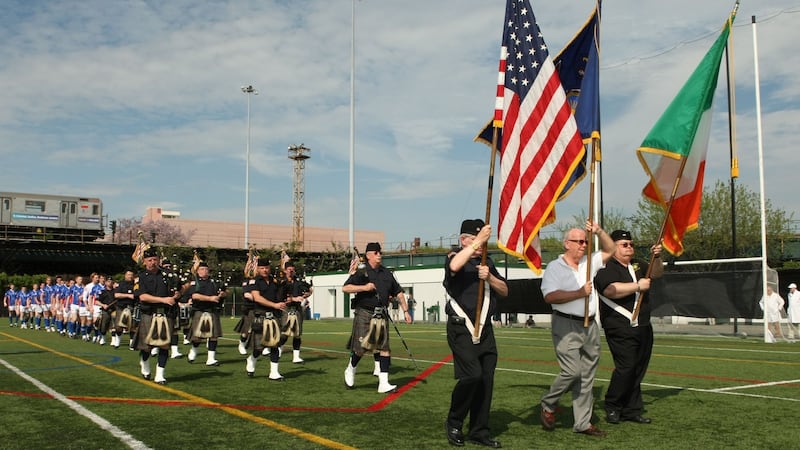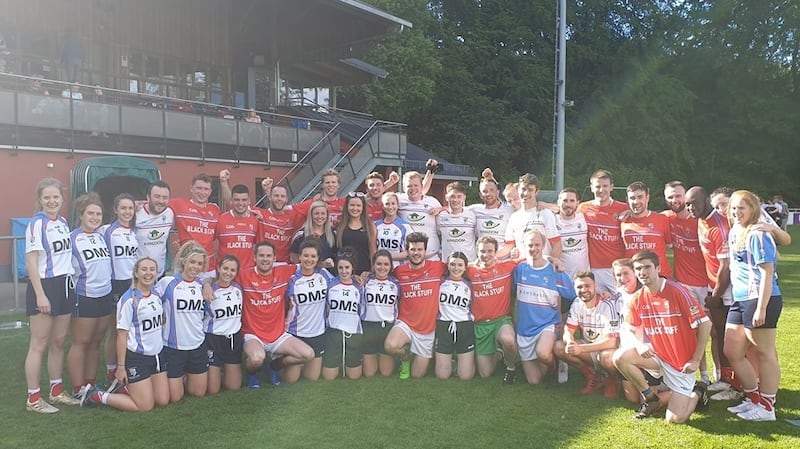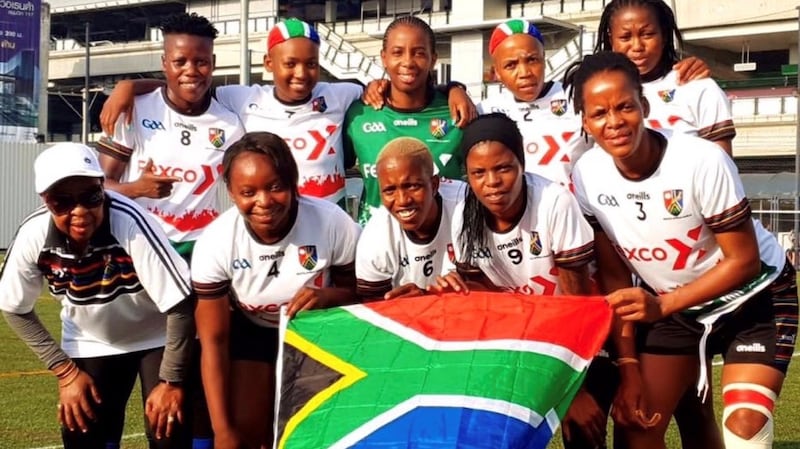On a sizzling hot day in mid-September, Cavan's Mick Higgins darted past his Kerry opponents to score a crucial second goal for the trailing men of Breffni in the All-Ireland Senior Football final. Hungry for success and determined to bring the Sam Maguire home he, and his teammates, fought voraciously against the defending All-Ireland Champions to eventually clinch a memorable four point victory.
Yet this was no ordinary final. For one it was unseasonably warm, with temperatures reaching over 30 degrees. Secondly, Higgins had the privilege of claiming his first All-Ireland medal only a few miles from where he had been born; surprisingly the pitch wasn't situated among the green fields of the Lake County nor along the banks of the Royal Canal but in a baseball stadium in upper Manhattan. A New Yorker by birth and a champion by sheer force of will I'm sure he couldn't have helped but feel that Gaelic games had just gone global. Yet in truth it had done so long before.
The 1947, All-Ireland Senior Football final may still be the only one ever held outside of the island of Ireland but it is far from the first unforgettable game of Gaelic football (or hurling or camogie) that has taken place away from these shores.
0 of 7
Our national sports have been played in New York as far back as the 1700s and today more than 40 GAA clubs can be found across the five boroughs. From the Argentinean pampas to the streets of Quebec and Sydney, hurling and football flourished throughout the 19th century as Irish immigrants brought their sporting passions and skills along with them to the four corners of the globe. In fact, a by law had to be brought in in 1845 in Quebec to forbid hurling in the narrow back lanes and alleyways of the city, as it was considered too dangerous.

Closer to home London GAA contended nine All-Ireland finals at the dawn of the 20th century and even triumphed over the might of Cork to claim the senior hurling title in 1901. The two most prestigious trophies awarded by the GAA, the Sam Maguire and the Liam McCarthy cups respectively, are both named after men who had held the offices of chairman and vice-chairman of the London County Board.
The 20th century also saw clubs spring up in locations not traditionally considered diasporic strongholds. After the Republic of Ireland joined the European Economic Community in 1973 and sent a cohort of diplomats to establish new missions on the continent it was only a matter of time before some local GAA clubs were founded. Gaelic Sports Club Luxembourg, which was established in 1978, is the oldest on the European mainland but since then it has been joined by more than 70 others based in unexpected locations ranging from Moscow to Malaga and the Arctic Circle to the warm waters of the Mediterranean.

Further east GAA clubs can be found throughout Arabia, the Malay Peninsula, the Philippines, Indonesia, China, South Korea and even Japan. In fact today one in five GAA clubs are found outside of Ireland, in almost every corner of the world.
Yet these 400 local associations have become far more than organisations dedicated to keeping their members fit or indulging our love for a little friendly competition. They're also community focal points for the Irish diaspora and a ready-made support network for new arrivals. Places where you'll find a sense of camaraderie or have the opportunity to meet people from back home. But they're also often kept alive by dedicated members of our global Irish communities with more distant ancestry who are determined to see this unique aspect of their culture passed on to the next generation. The success of the Continental Youth Championships in North America is a testament to this.
Increasingly, Gaelic Games are also becoming a bridge for those without any Irish heritage to engage with our sporting traditions and way of life.

The South Africa Gaels, who will compete for the second time in the GAA World Games this week in Waterford and Dublin, became the first club ever to field both a men's and ladies' team without a single Irish player in the competition in 2016. This time round they'll share that distinction with Argentina. A total of 86 teams, many for the first time, have travelled here from six continents in the hopes of building connections, engaging with Ireland and hopefully earning a little silverware along the way. The world games might be a recent phenomenon but Gaelic Games has always been global.
This Extraordinary Emigrants article was written by Nathan Mannion, senior curator of EPIC The Irish Emigration Museum in Dublin’s Docklands, an interactive museum that tells the story of how the Irish shaped and influenced the world. epicchq.com


















